These red cabbage indicator colour changing potions are fantastic fun for kids of all ages and very easy to create. We used red cabbage indicator and added different amounts of baking soda ( an alkali ) and vinegar ( an acid ) to make the different colours.
What is a pH Indicator?
A is a substance which has one colour when added to an and a different colour when added to an .
Acids have a low pH and bases a high pH.
Why does red cabbage make a good indicator?
Red cabbage contains a chemical called anthocyanin. This changes colour depending on the acidity of its environment. It turns a pink/red colour in the presence of an acid, is purple when neutral and when added to an alkaline substance turns blue or green.
How to make Colour Changing Potions
Red Cabbage Indicator Ingredients
Red Cabbage ( chopped )
A pan
Water
A stove
Strainer
Selection of jugs, jars and beakers
Vinegar
Dish soap ( washing up liquid )
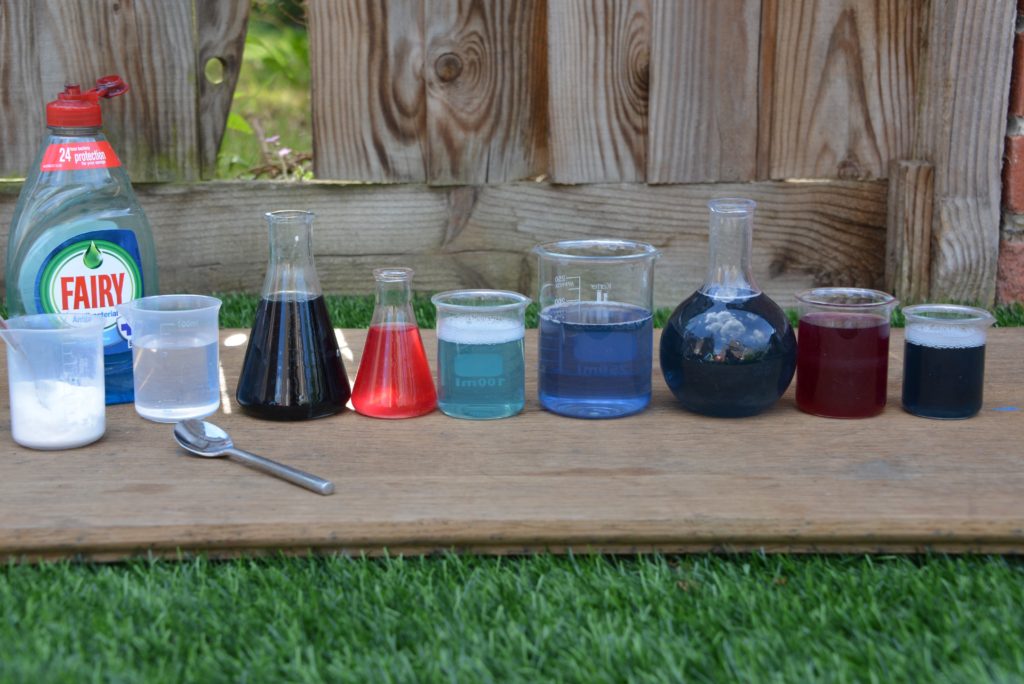
Instructions
Place your chopped red cabbage into a pan, cover with water and heat until the water turns purple ( ask an adult to help )
Carefully pour the mixture through a strainer to remove the red cabbage and collect the solution in a container.
Pour the indicator into smaller beakers, it doesn't really matter how much you use, but we made ours about half full.
Add different amounts of baking soda or vinegar to each one.
How many different colours can you make?
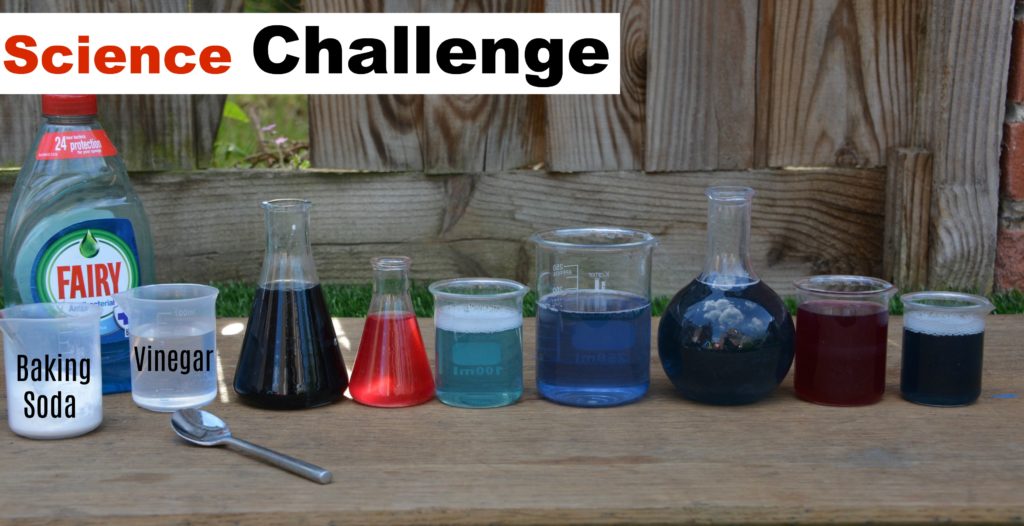
Colour Changing Potions Challenge
For a little extra fun, you can add vineger to a beaker containing baking soda and vice versa to see a fizzy colour changing reaction.
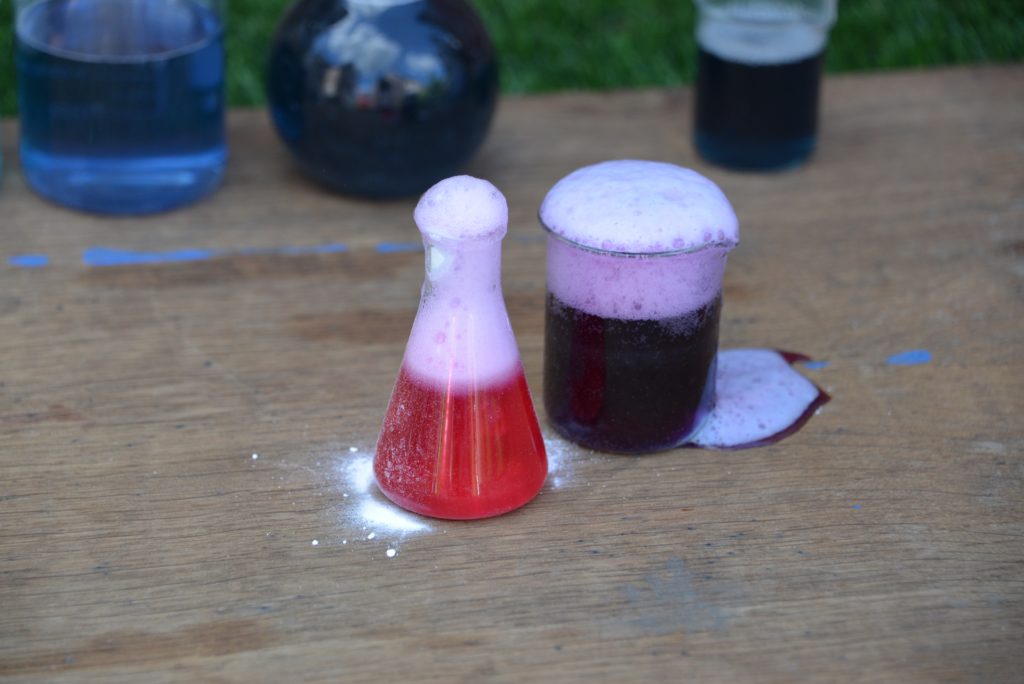
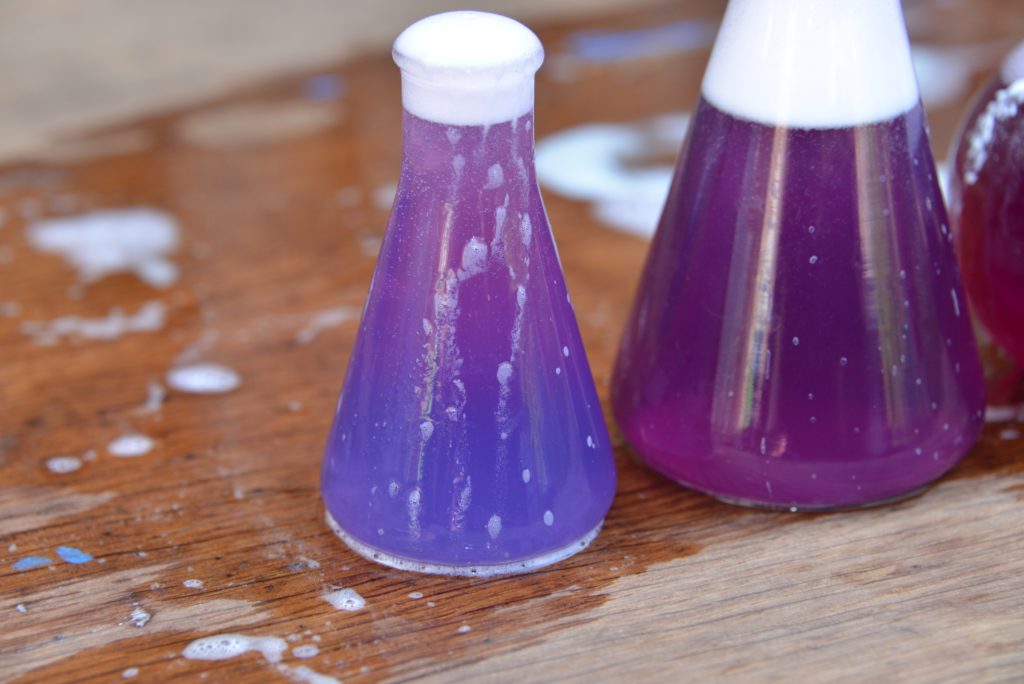
Safety note
Wear safety goggles if using strong acids/bases.
An adult should help with the chopping and heating of the cabbage.
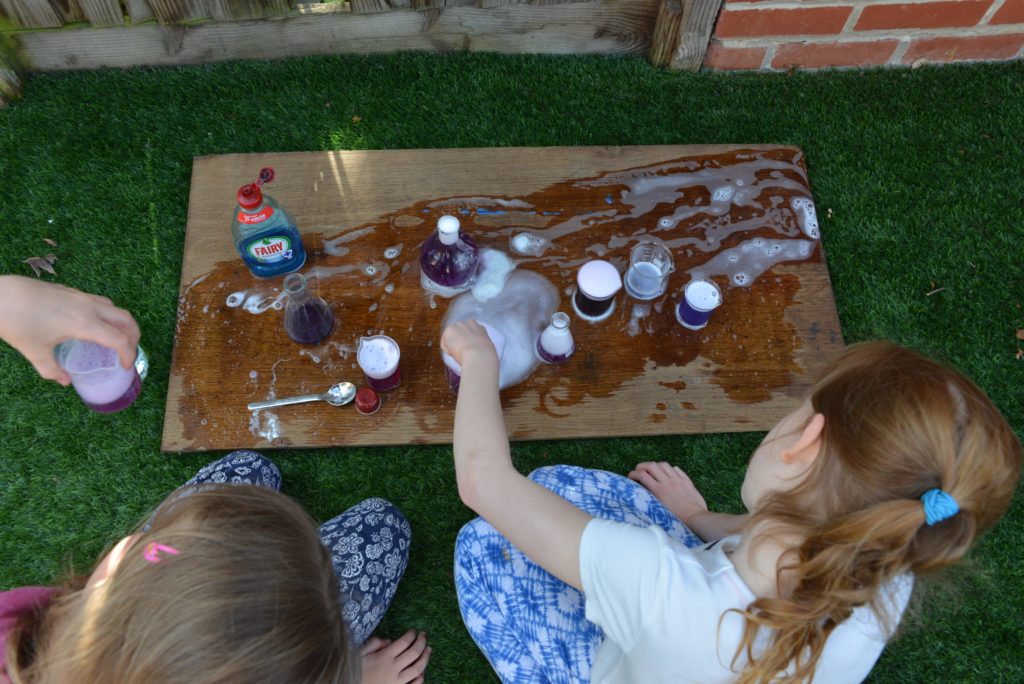
More Red Cabbage Indicator Ideas
We love how The Science Kiddo froze some red cabbage indicator to test different substances
Make your own pH indicator test strips
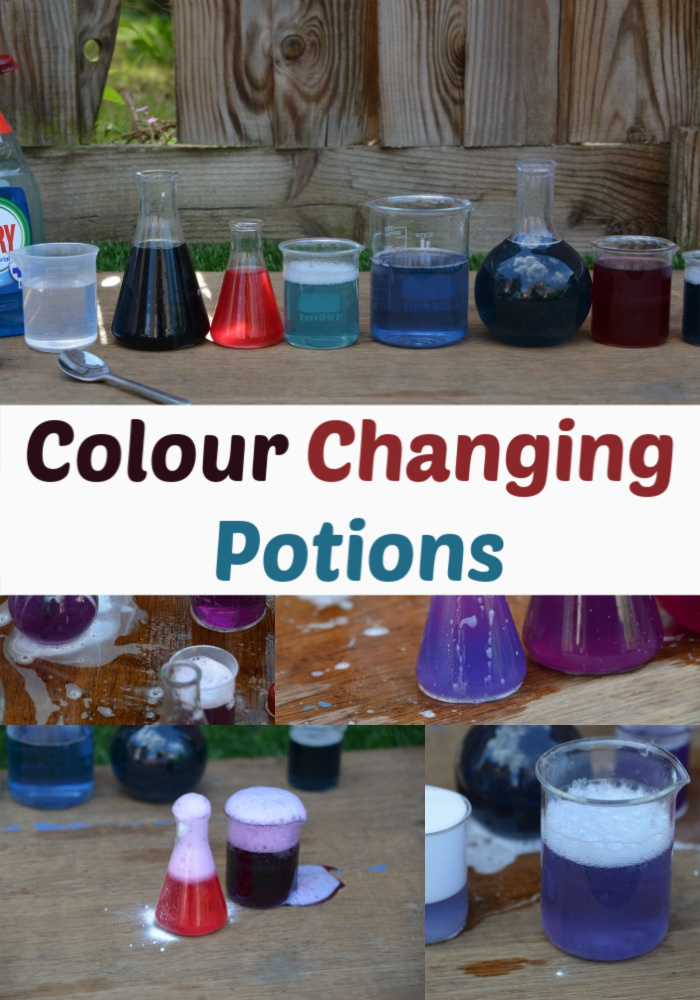
Last Updated on February 13, 2020 by Emma Vanstone
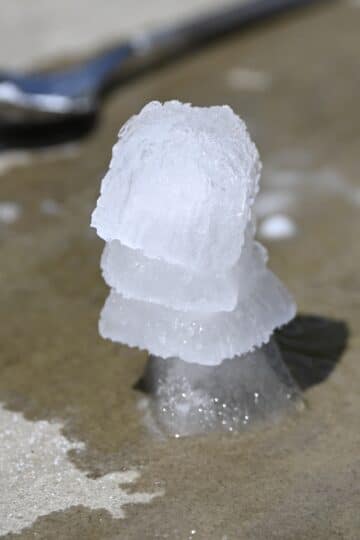
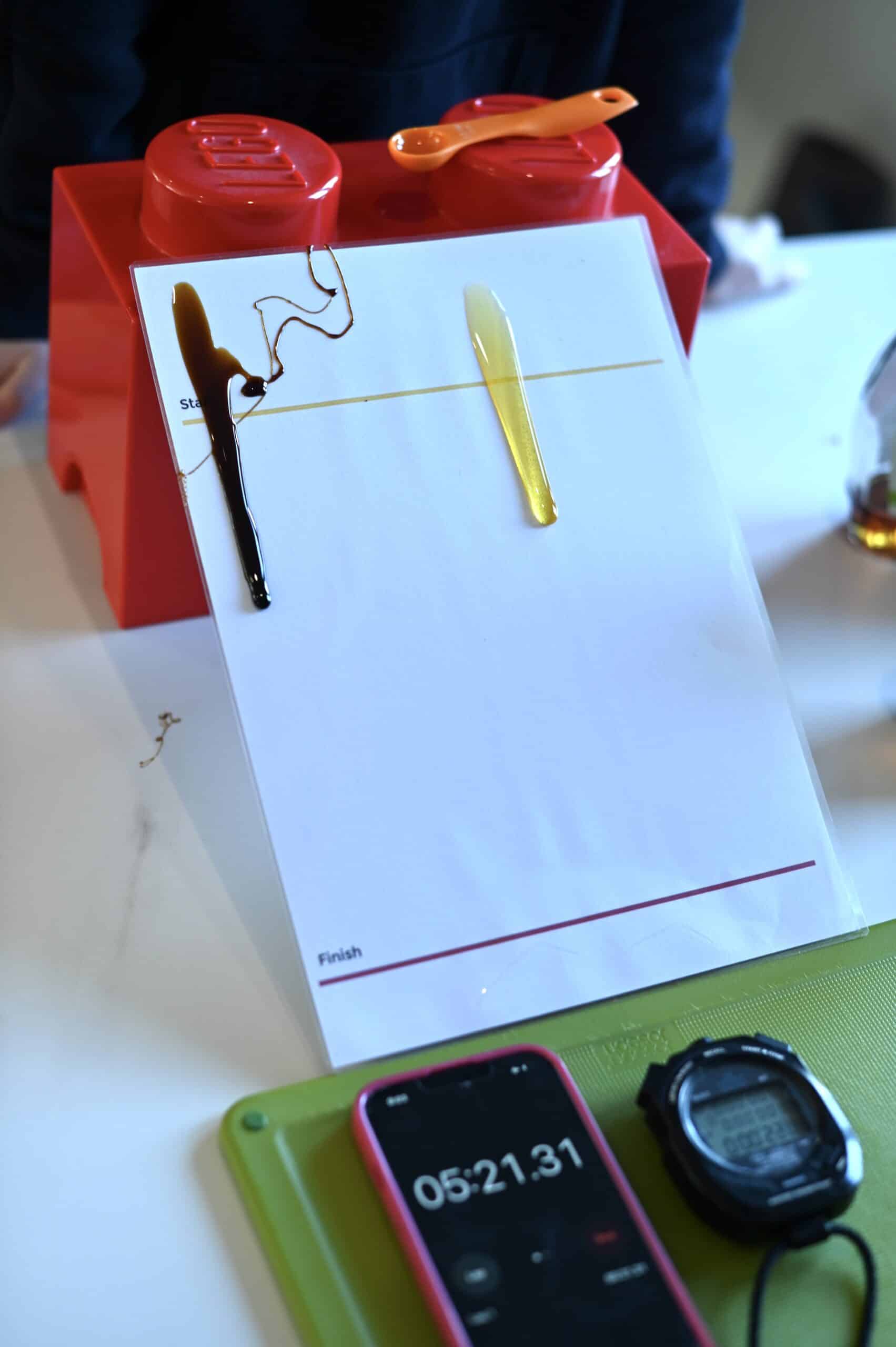
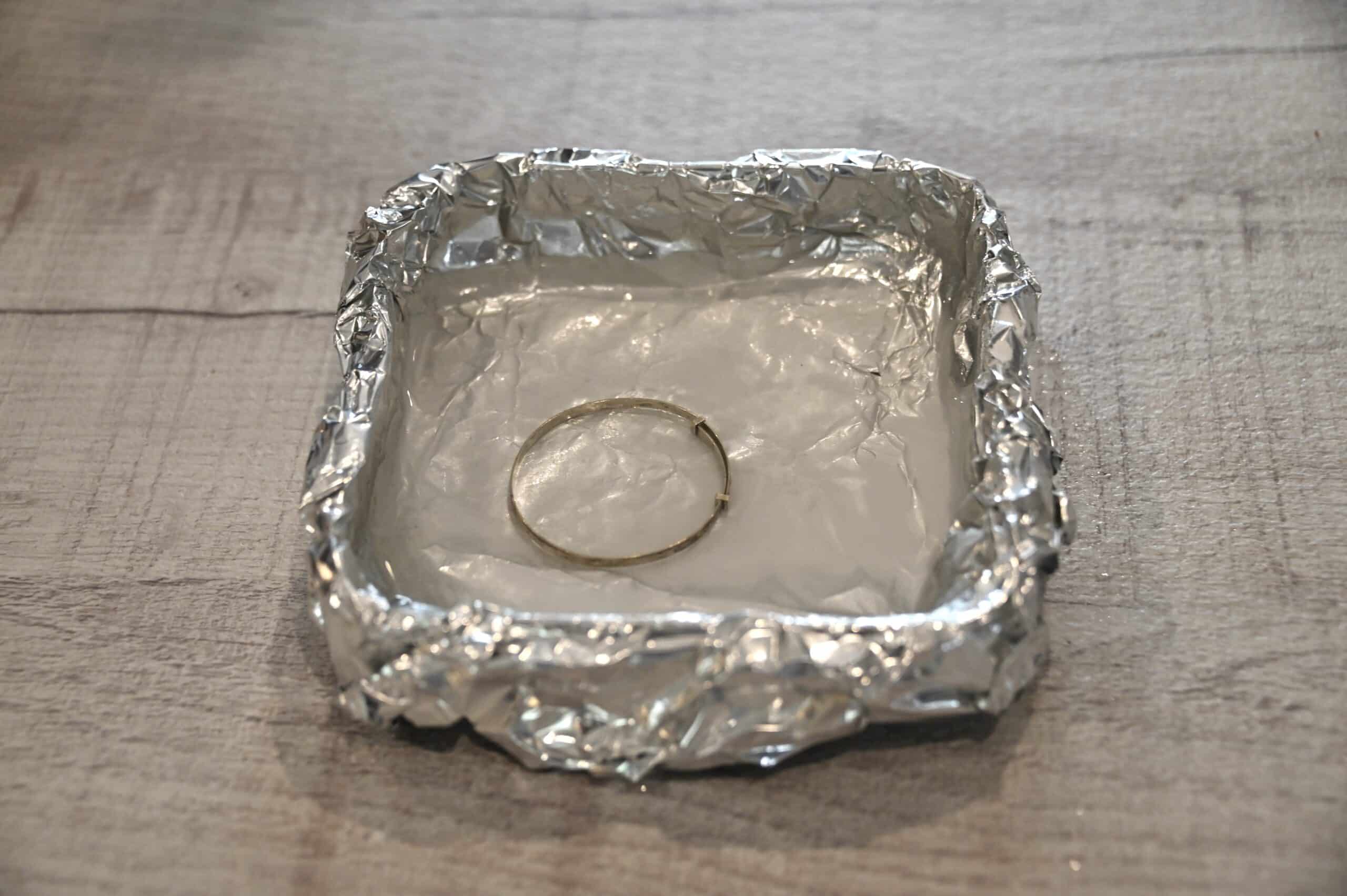
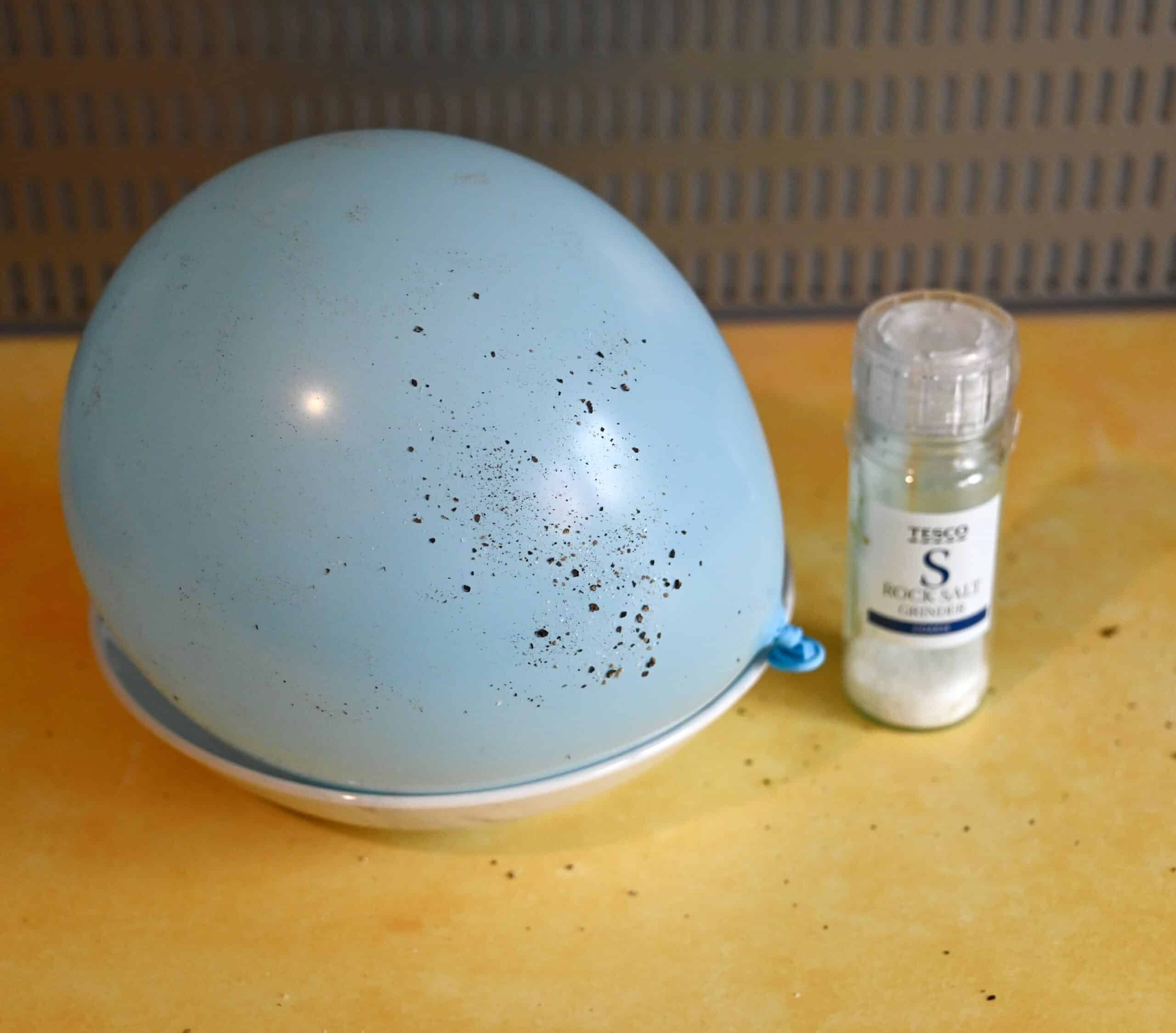
Katie A says
Hi! I was wondering if you mixed the colors together? I am trying every where to find mixing colors for a Harry Potter themed gender reveal and I cannot figure this out. Can you help?
Niels Bouwhuis says
So why do you need the dishwash liquid? That's not explained
Emma Vanstone says
Hello, the washing up liquid is to help the mixture foam up better.